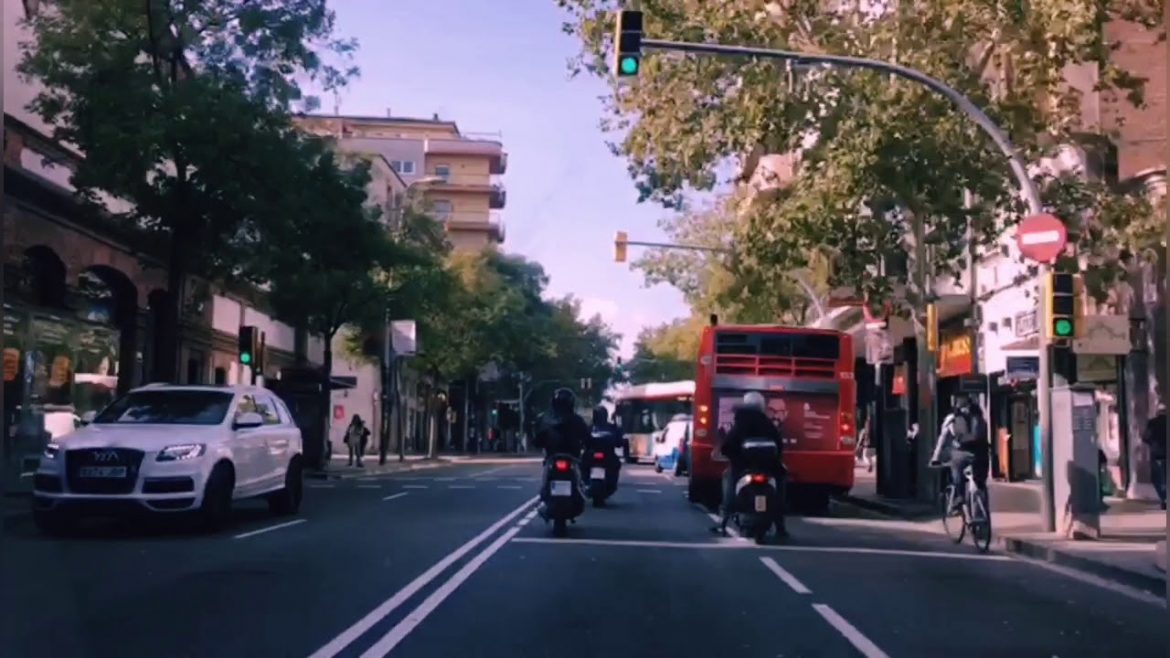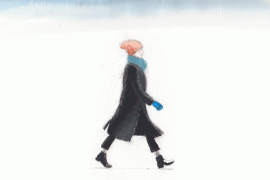[dropcap letter=”N”]
obody questions the fact that carrer de Sants is one of the main shopping streets in Catalonia –and the rest of the world–. Those endowed with good memory can certainly recall that the outline of this memorable street was originally part of Via Augusta, an AP7 toll-free motorway that allowed people from the province of Tarragona spend their summers in Barcino. Despite Roman efforts, this would be nothing but fields until the 19th century, which is when some of the largest factories of the time were set up, some of them being those of the industrialists Batlló and Güell (before moving to the industrial colony of Santa Coloma de Cervelló) or Espanya Industrial, the country’s biggest cotton factory.
To a large extent, thousands of workers –mostly women– operated the textile machines as well as went to live there. This dynamized the commercial set-up of Carrer de Sants –or Carrer Creu Coberta, as the name changes depending on the street section– with the opening of such markets as those in Sants and Hostafrancs, and also the ubiquitous stores of cooked pulses, the time’s version of fast food, a pre-cooked dish for female workers. As there was a constant need of workforce, the area welcomed families from the Spanish regions of Valencia and Murcia from the first migratory wave, and such galleries as «El Barato» were inaugurated, together with their own sales shops –an outlet avant la lettre– on the corner with Carrer Riera, the homeplace of the Catalan icon Núria Feliu (proudly converted into a giant figure in that area). Ten years later, the young man who would walk around this place, especially around Tenor Masini, was Quim Monzó, who, if my memory serves me right, borrows the bars of the area for his novel L’udol del griso al caire de les clavegueres, especially in that chapter where, if you wanted to listen to music, you had to slot a coin in the «jukebox’s vagina».
 The underground reached Carrer de Sants in 1926, April 1969 saw its last tram circulate –giving way to the same bus number, the 56– and at some point of the latest years, the tourists landed, those staying in airbnbs or the latest zen hotels, those eating peeled-up fruit and only get close to markets to buy Barça t-shirts. Like all commercial avenues in the Western world, currently, historic stores such as the centennial photographic Studio Daguerre in Carrer de Sants live together with new umpteenth franchises –baker’s, delicatessen or mattresses– that standardizes everything to such an extent that, at first sight, you don’t know whether you are in Barcelona or Dublin.
The underground reached Carrer de Sants in 1926, April 1969 saw its last tram circulate –giving way to the same bus number, the 56– and at some point of the latest years, the tourists landed, those staying in airbnbs or the latest zen hotels, those eating peeled-up fruit and only get close to markets to buy Barça t-shirts. Like all commercial avenues in the Western world, currently, historic stores such as the centennial photographic Studio Daguerre in Carrer de Sants live together with new umpteenth franchises –baker’s, delicatessen or mattresses– that standardizes everything to such an extent that, at first sight, you don’t know whether you are in Barcelona or Dublin.
I have never known exactly where Carrer de Sants ends (some say, as far as Esplugues, others claim, at Sant Just Desvern), but we certainly know where it begins: the zero km is the absolute wreck of Plaça d’Espanya, the unspeakable Hotel Plaza and the Richard Rogers flying dish landed atop the bullring. But this monstrous start is an ideal way of beginning Carrer de Sants, a hint that the best is yet to come.
From Carrer de Sants, I only regret the marketing campaign promoting the street as the longest commercial street in Europe. At first, one may find such slogan appealing, but a quick google search brings this allure down on discovering a relentless continental competition to see whose is biggest: the Viennese are sure that this position goes to their beloved Mariahilferstrasse, in Bordeaux they claim it is Rue Sainte-Catherine, while the Polish hold that the longest commercial street is Ulica Piotrkowska in Łódź. Further north, the competition continues: in Copenhagen, they are sure that this pride falls on Strøget Street, while the Berliners hold proudly that the longest commercial street in the continent is Kurfürstendamm Avenue.





















